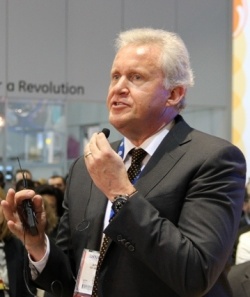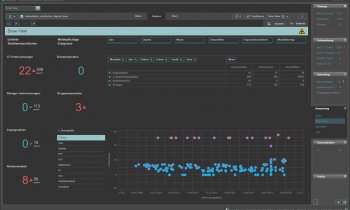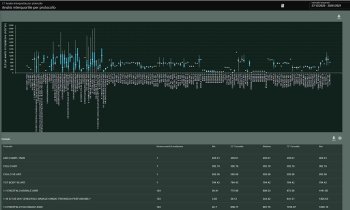Excellent images, better workflows and optimized collaboration
That’s what the annual RSNA meeting is all about: meeting friends and learning all about new devices, explained Jeff Immelt, GE CEO, in his keynote address at the company booth.

He had come to Chicago to help launch a cornucopia of new products and was visibly proud to present “a fantastic array of new technology”. He emphasized that the major current trend - the science of materials - has been a key ingredient in GE’s development efforts through generations and today “meets sensing technology, analytics and information technology”. This, according to Immelt, will provide better results for clinicians and hospital CEOs.
IT enhances collaboration
There was a time when IT played second fiddle in healthcare. But this has long since changed and indeed one of the two outstanding GE innovations presented at this year’s RSNA is an IT solution: Centricity 360. Advanced IT helps drive collaboration and the flow of information, Immelt underlined – core requirements postulated by the “partnership” motto of RSNA 2013. Moreover, radiology productivity and enhanced analytics in image post-processing are driven by IT innovations.
The Centricity 360 solution, developed in San Ramón, will deliver exactly those benefits: it will enhance collaboration and information flow. Small and large hospitals alike will be able to access images and post-processing capabilities anytime, anywhere from the cloud. Healthcare workers separated by specialty, geography or institution require safe and secure networks and tools for seamless collaboration. This is where Centricity 360 acts as an enabler. In addition, it will support care providers in advancing clinical and operational efficiency.
“By enabling intelligent collaboration, this system will help radiologists to literally get out of the dark,” explained Dr Rasu Shrestha, radiologist at the University of Pittsburgh Medical Center (UPMC) which has a long-standing partnership with GE. It will allow them to be physician consultants rather than mere diagnosticians “which is what we have done for the past several decades”. The expert is confident that the Centricity 360 empowers radiologists to drive their discipline to that next level. Furthermore, enterprise analytics features of the system will support UPMC in achieving the liquidity of unstructured and structured data the organization is seeking for strategic purposes – moving from data to information and from information to knowledge. And, in those challenging times when radiologists are being continuously pushed to do more with less, at UPMC the system has proven its potential to increase productivity significantly.
CT: exit slice counts, enter fast and excellent images at low dose
The Revolution CT is another outstanding new product highlighted at the GE booth at McCormick Place. While for years, slice count has dominated research and development and manufacturers dedicated their efforts to optimizing spatial, temporal or coverage characteristics, GE’s new scanner integrates all these features. This CT, with all components, including detector and gantry, boasting a brand new design, is meant to be a “workhorse modality” Immelt said. While increased speed helps push throughput excellent image quality for a robust diagnosis, organ coverage and low dose make sure that the system meets the expactations of physicians and patients. “Uncompromised performance and best possible patient outcomes are key benefits of this innovation”, a worldwide “first”, emphasized GE’s CEO.
Dr Ricardo Cury, Chairman of Radiology and Director of Cardiac Imaging at Baptist Health South Florida, and his team contributed immensely to the new product. “This is the most advanced technology available,” the expert underlined. After having worked with the scanner for half a year, he confirmed that the system delivers on the promise of optimized spatial and temporal resolution, coverage and dose reduction. Furthermore, organ-based volumetric imaging not only detects disease, as in heart, brain and liver imaging, but also identifies perfusion and functional characteristics of a disease. “This enables precise diagnosis and also cuts cost,” said Dr Cury, who presented selected cases and added that “this CT has proven to work well for challenged patients”.
In addition to the these major innovations in IT and CT, there are many other new products and product enhancements that make the GE booth a very interesting place to visit at RSNA 2013.
by Michael Reiter
04.12.2013











